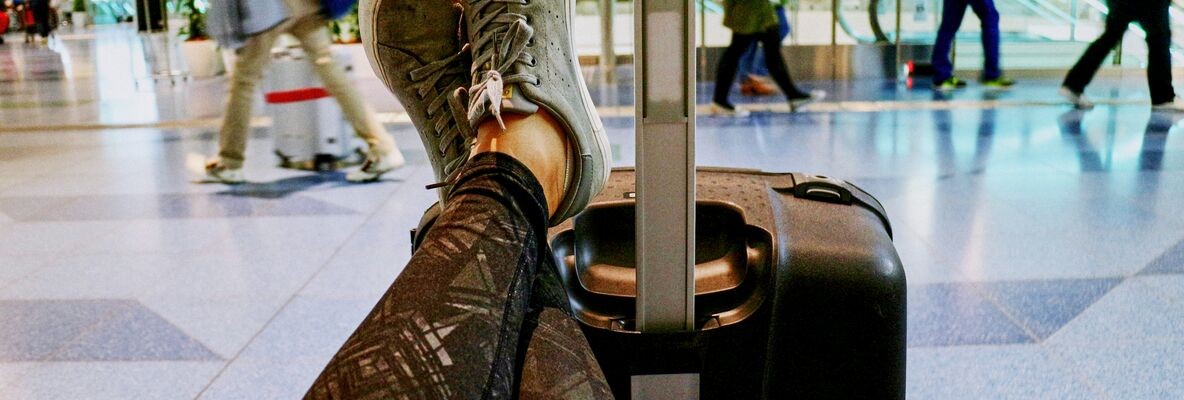We use cookies to enhance your experience. Basic cookies are essential for the proper working of this website. For example, they save your language preferences. They also help us gather anonymous information about the use of our site. More information in our Cookie Policy.
How to avoid falling into the Wifi trap
Free, available everywhere and very convenient, public Wi-Fi has become so widespread that it is now part of our daily lives. Most of us connect to it without thinking about the disastrous consequences that can occur. Free Wi-Fi is a boon for cybercriminals. They can very easily steal your personal data if you do not protect it!
What are the dangers?
There are many dangers because security on these networks leaves much to be desired. Most of the time, they do not require authentication to establish a connection and their encryption standards are lacking or even non-existent.
The most common threat is the man-in-the-middle attack. The principle is simple: when you connect to a free Wi-Fi service, the hacker hacks the system and is positioned between you and the access point. When you send your data to access your e-mails or your online banking, you are also unwittingly sending it to the cybercriminal. The latter can then gain access to your device (computer, tablet or smartphone) and cause unlimited damage. The cybercriminal can plunder all the content you have on these devices, steal your credentials, transfer data files and install malware. In no time at all, they can block your device or take full control of it.
Another well-known technique is snooping or sniffing. This is also an interception attack. The cybercriminal sets their laptop up near a hotspot (a Wi-Fi access point) and listens illegally to all the signals that pass through it, thanks to a special software kit. They can see and save everything you do online. From this point forward, they will be able to inspect all the recorded data, find the most interesting information such as your usernames and passwords, and divert all your bank accounts.
Finally, the last well-known hackers’ trap is malicious access points. You think you are connected to a legitimate network because of the name of the network. In fact, you clicked on an illegal access point, configured by cybercriminals. They can now view all your sensitive information. They will be able to direct you to a fake website in order to install malware on your computer.
How can you protect yourself?
- Disable Wi-Fi on your device when you are not using the Internet. You avoid not only quickly using up your battery but also automatic connections to a Wi-Fi network that you do not know.
- Do not let your device save the Wi-Fi network. While it offers undeniable ease of use, this feature also leaves the door wide open to hackers. They can easily create their own network with the name and have access to your profile data. Deactivate this option or delete the Wi-Fi network after use.
- Check the compliance of the Wi-Fi network’s name. Cybercriminals often use networks with similar names to those already nearby. A letter or a small apostrophe is often added and is well hidden in the name.
- In any case, it is better to connect to a secure Wi-Fi network that requires a login and a password. This is usually the case in public places such as cafes, restaurants and hotels.
- Use an antivirus program or a security application and always install the latest updates. This provides you with protection against viruses, spyware and hackers.
- Make your passwords secure. Storing your bank codes and passwords on your device is certainly not the best option. Or you could use a secure password manager.
- Check the URL of the sites you visit. If you see unusual characters in the URL of a site that you visit regularly, it is probably a fake designed by hackers to steal your personal data.
- Browse only on secure sites, i.e. sites whose URL start with https:// instead of http://. Most of the times, browsers tell you when it is a non-secure site.
- Do not check your bank accounts, do not make online payments and do not send important data. Instead, use your supplier’s network for this type of transaction. If you are travelling abroad, use your smartphone’s 4G or 5G network. Depending on your package, this solution may not be free – but it is better to pay a little more than risk losing everything.
07/22
-
Student employees’ rights and obligations

As a student, you might want to make some extra money and gain some paid work experience. Very good idea, but do you know your rights and obligations as a student employee?
-
What formalities to follow at your arrival in Luxembourg

If you have just arrived in Luxembourg or if you intend to come into the country in the near future, one of your first steps will be the opening of a bank account. But which bank to choose?
-
What is the best way to save money when planning a holiday?

Deciding how to spend a well-deserved summer holiday can be exciting. Should you go back to a favourite location, or try something new? But there can be tricky trade-offs, such as whether to decide early and book ahead or wait as long as possible in the hope of finding a better deal.